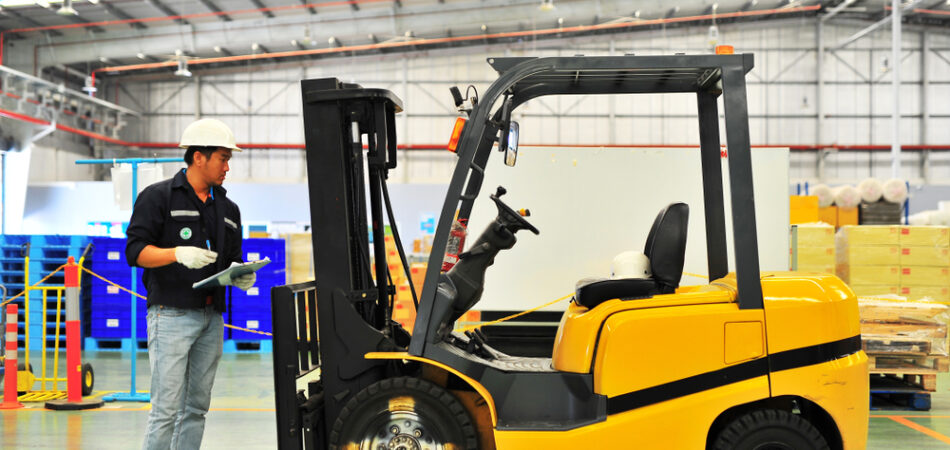
Forklifts are indispensable tools in many industries, from warehouses to construction sites, enabling efficient material handling and operations. However, ensuring their safety and functionality is paramount to prevent accidents and maintain productivity. A daily forklift inspection checklist is a crucial part of routine maintenance to identify potential issues before they escalate. This comprehensive guide outlines the essential steps and considerations for conducting a thorough inspection.
Importance of Daily Inspections
Regular forklift inspections are not just a legal requirement in many regions but also a proactive measure to uphold safety standards and operational efficiency. By incorporating daily inspections into your routine, you mitigate the risk of mechanical failures, reduce downtime due to unexpected breakdowns, and prolong the lifespan of your forklift equipment.
Legal Compliance
Government regulations mandate regular inspections of industrial equipment, including forklifts, to ensure they meet safety standards. Adhering to these regulations not only avoids potential fines but also demonstrates your commitment to workplace safety.
Safety Enhancement
Identifying and addressing issues through daily inspections significantly reduces the risk of accidents. Well-maintained forklifts contribute to a safer work environment for operators and other personnel working in proximity to the equipment.
Operational Efficiency
A well-maintained forklift operates at peak efficiency, enhancing productivity and reducing operational costs associated with unplanned downtime and repairs.
Components of a Daily Forklift Inspection Checklist
A thorough inspection covers various aspects of the forklift, focusing on critical components that affect safety and performance. Below are the key components typically included in a daily forklift inspection checklist:
1. External Inspection
Visual Checks
- Tires: Check for wear and tear, proper inflation, and damage.
- Fluid Leaks: Inspect for leaks in hydraulic lines, brake fluid, and coolant.
- Forks and Attachments: Ensure they are securely attached and free of cracks or bends.
- Lights and Signals: Test headlights, brake lights, turn signals, and other warning lights.
Functional Checks
- Brakes: Test parking and service brakes for responsiveness.
- Steering: Ensure smooth operation without excessive play.
- Horn: Verify functionality to alert pedestrians and other workers.
- Mirrors: Adjust and clean mirrors for maximum visibility.
2. Internal Inspection
Engine Compartment
- Fluid Levels: Check oil, coolant, hydraulic fluid, and fuel levels.
- Battery: Inspect battery condition, terminals, and electrolyte levels (if applicable).
- Belts and Hoses: Look for signs of wear, cracks, or loose connections.
- Air Filters: Clean or replace air filters as needed.
Operator Controls
- Dashboard Instruments: Check gauges, indicators, and warning lights for proper functioning.
- Seat and Seatbelt: Ensure seatbelt condition and functionality of the seat switch (if equipped).
- Pedals: Test accelerator and brake pedals for smooth operation.
3. Functional Checks
Operational Tests
- Lift Mechanism: Test lift and tilt functions, ensuring smooth operation without jerking.
- Hydraulic System: Check for leaks, unusual noises, or sluggish responses.
- Stability: Inspect mast and carriage for cracks, bends, or signs of wear that could affect stability.
- Emergency Systems: Test emergency brakes and other safety features.
Conducting the Inspection
Performing a daily forklift inspection involves systematic checks that operators and designated personnel should follow rigorously. Here’s a step-by-step guide to conducting an effective inspection:
Step 1: Preparation
- Park the forklift in a designated inspection area away from traffic or operational zones.
- Engage the parking brake, lower the forks, and turn off the ignition.
Step 2: External Inspection
- Start with visual checks of tires, lights, and hydraulic components.
- Look for leaks or visible damage that may affect safety or performance.
Step 3: Internal Inspection
- Open the engine compartment and inspect fluid levels, battery condition, and belts.
- Check operator controls, including instruments, pedals, and safety features.
Step 4: Functional Checks
- Start the engine and perform operational tests for lift mechanism, steering, and brakes.
- Listen for unusual noises and observe the performance of critical functions.
Step 5: Documentation
- Record inspection findings in a designated log or checklist.
- Note any issues discovered and actions taken, including repairs or maintenance needed.
Common Issues and Maintenance Tips
Even with regular inspections, forklifts may encounter common issues that require prompt attention. Understanding these issues and implementing preventive maintenance measures can prolong the lifespan of your equipment and ensure safe operation.
Common Issues
- Battery Degradation: Regularly check battery condition and charging to avoid downtime.
- Tire Wear: Rotate tires periodically and replace worn-out tires promptly.
- Hydraulic Leaks: Address leaks promptly to prevent damage to the hydraulic system and maintain lift performance.
- Brake Problems: Ensure brakes are adjusted correctly and replace worn brake pads or discs as needed.
Maintenance Tips
- Schedule Regular Servicing: Follow manufacturer recommendations for scheduled maintenance and servicing.
- Operator Training: Provide comprehensive training on forklift operation and maintenance procedures.
- Keep Records: Maintain detailed records of inspections, repairs, and servicing to track the forklift’s history and performance.
Conclusion
A daily forklift inspection checklist is not just a regulatory requirement but a proactive approach to ensure safety, operational efficiency, and compliance. By incorporating thorough inspections into your daily routine and addressing issues promptly, you contribute to a safer workplace environment and extend the lifespan of your valuable forklift equipment. Prioritizing maintenance and safety not only benefits your organization but also enhances overall productivity and reduces operational costs in the long run. Remember, safety starts with a well-maintained forklift.
Need a Crane Inspector in Chandler, AZ?
American Inspection and Test, Inc. is a family owned and operated crane and aerial lift inspection service with 20 years of experience. Our mission is to elevate safety through a higher quality of certified inspectors and have a better standard testing and inspection procedures overall. We are known for our high standards and work ethic and have been recognized by multiple national, federal, state and city agencies. Increase safety and lower maintenance costs by calling us today.
